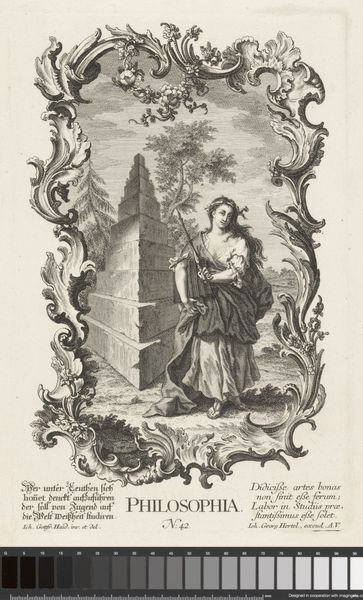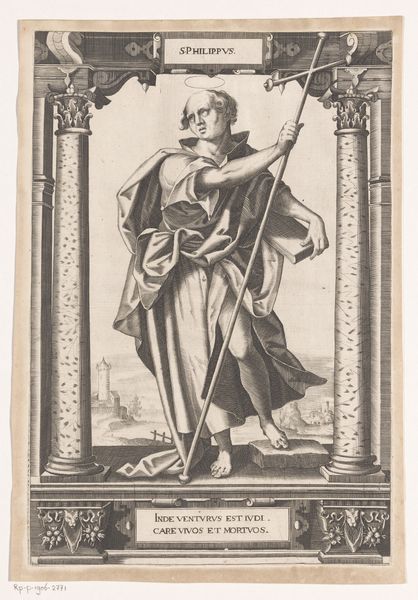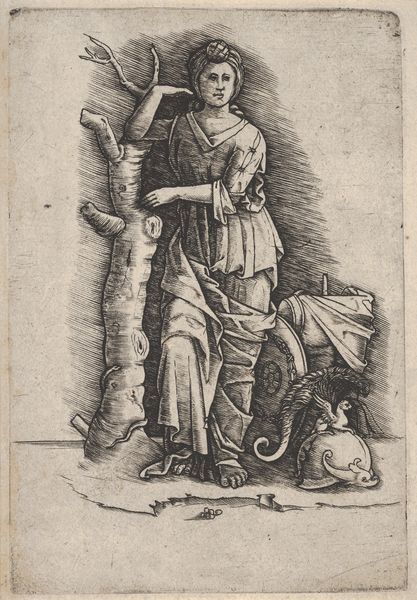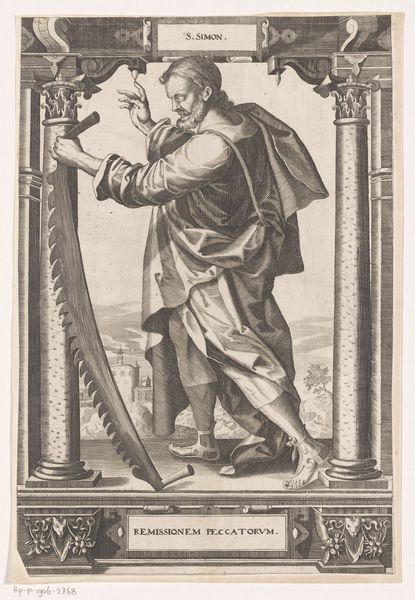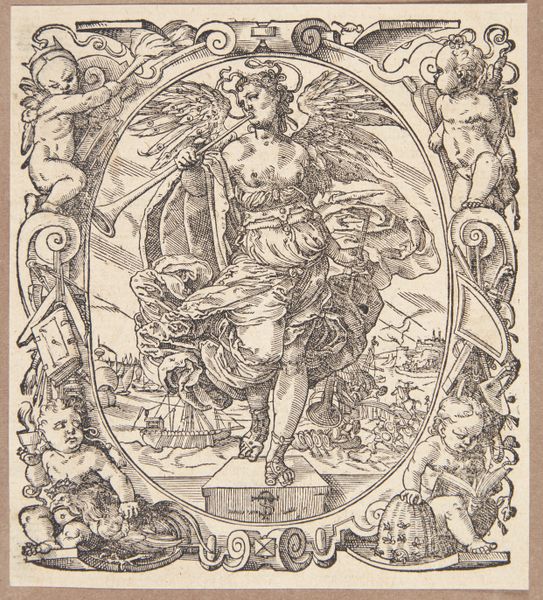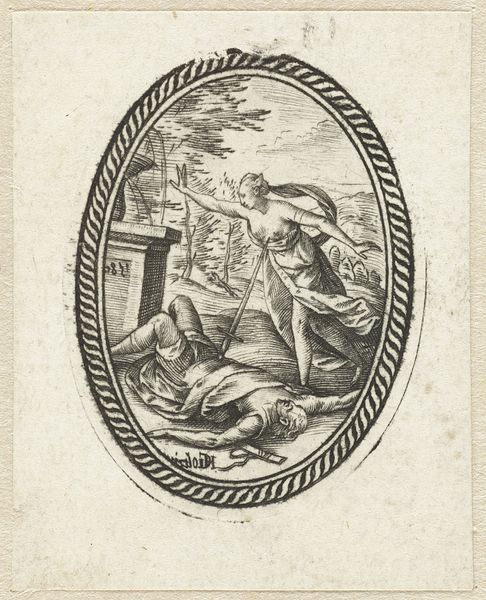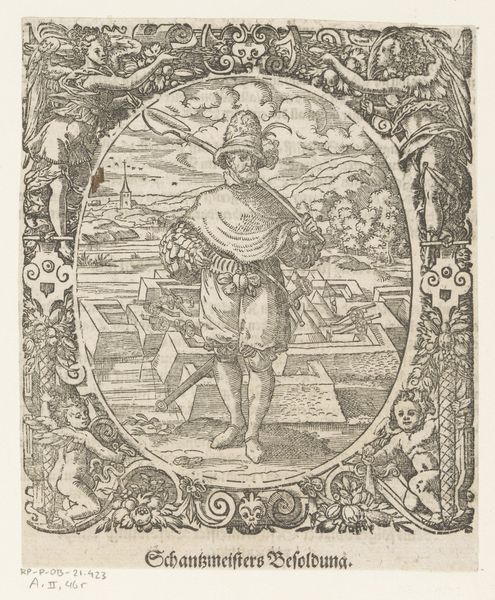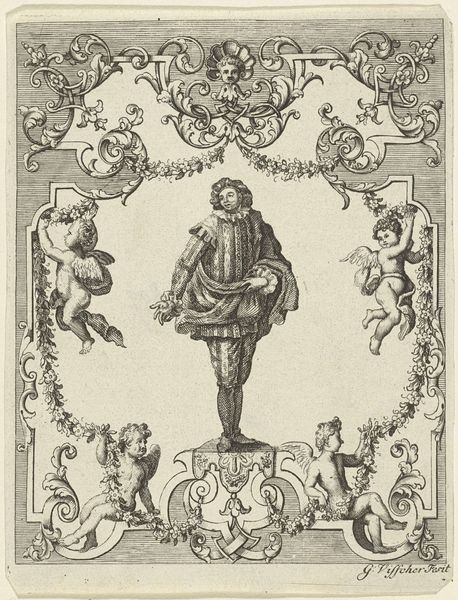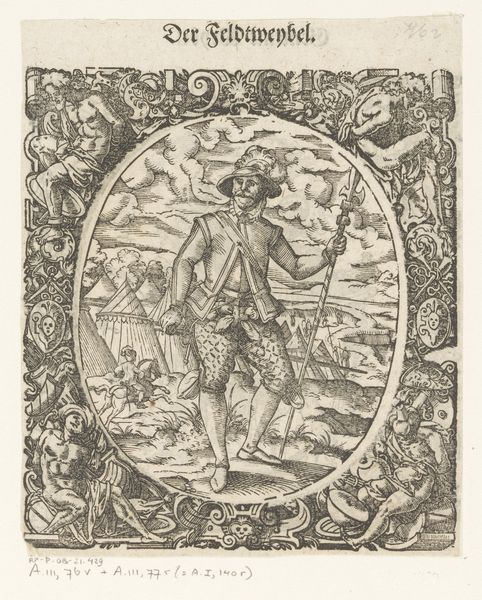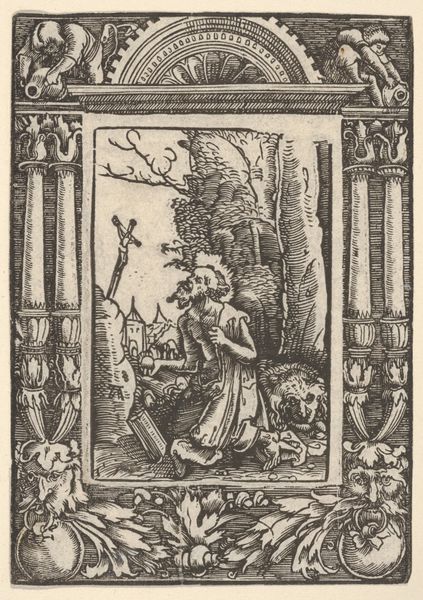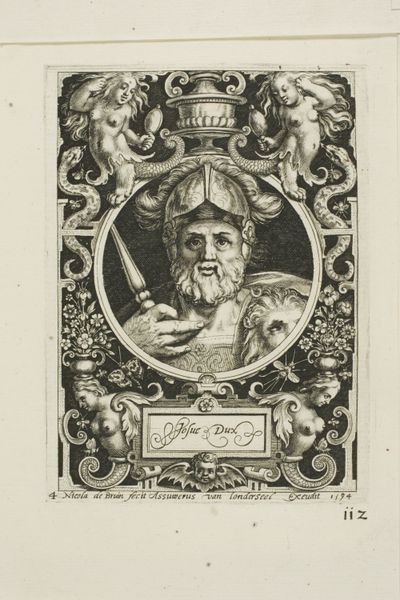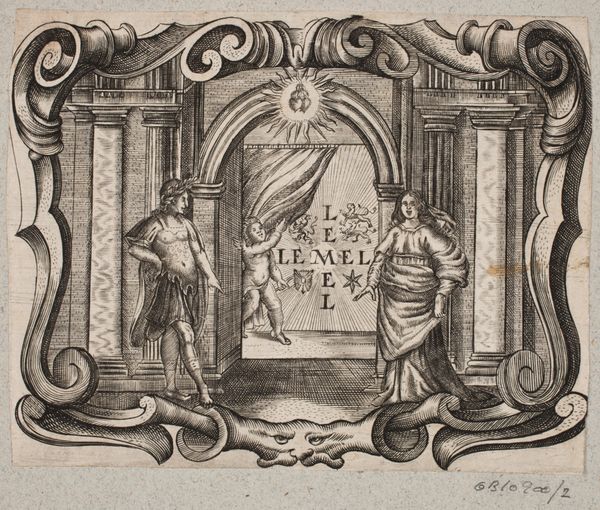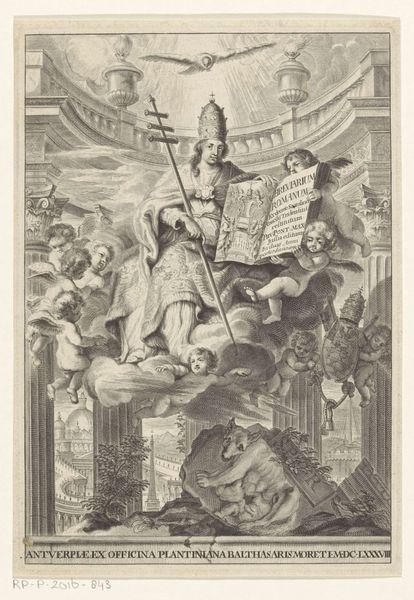
print, engraving
#
portrait
#
allegory
#
baroque
# print
#
pen sketch
#
pencil sketch
#
figuration
#
line
#
history-painting
#
engraving
Dimensions: height 297 mm, width 192 mm
Copyright: Rijks Museum: Open Domain
Editor: Here we have "Personificatie van het melancholisch temperament," or "Personification of the melancholic temperament," a 1745 engraving by Johann Gottfried Thelott, housed here at the Rijksmuseum. I am immediately struck by how it embodies a sense of… well, melancholy! It's so literal, and yet the details draw me in. What do you see in this piece that perhaps I'm missing? Curator: I see a potent commentary on the societal constraints placed upon expressions of emotion, especially in the 18th century. Melancholy, you see, wasn't merely sadness; it was a fashionable, almost performative state, particularly amongst educated men. The ruined architecture surrounding the figure – have you noticed the arches? – suggests the decay of reason and the triumph of emotion, but I wonder who actually has the luxury to express and wallow in their feelings at a time where simply surviving was everything? Do you think there's a gendered aspect to this portrayal? Editor: Definitely. It’s hard to imagine a similar depiction of a woman during that era. So, this isn't just a portrait of sadness; it's a statement on the performative nature of emotions allowed to specific people during a specific time in history? Curator: Precisely! Think about the symbols—the book, the money bag, the bird… They represent the paralysis that melancholy induces, keeping people from acting! Now, consider the rigid lines of the print itself versus the turbulent emotions it depicts. Isn't that contradiction compelling? Editor: Absolutely. It’s like a cage around the feeling, so in control despite showing so much. The expert craftsmanship almost glamorizes what many couldn’t afford to perform. Curator: It asks us to reflect on who gets to publicly grieve versus who is excluded from it. That's why I think, beyond its historical context, this piece still resonates deeply today. Editor: Wow, I will definitely think of it in these terms, particularly about the performativity around this type of sadness and its association with male artists. It's completely transformed how I perceive this artwork. Thank you!
Comments
No comments
Be the first to comment and join the conversation on the ultimate creative platform.
